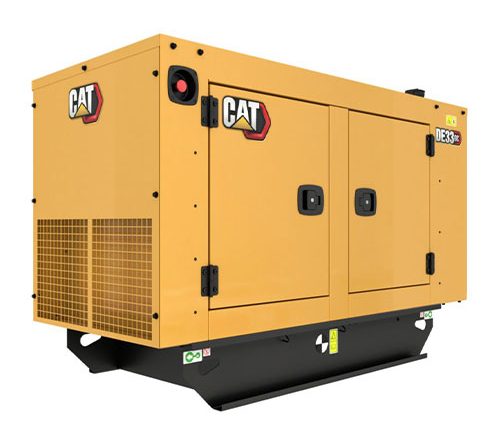How to Choose the Right Backup Generator for Your Home or Business
How to Choose the Right Backup Generator for Your Home or Business
A backup generator is a device that provides electricity when the power from the primary source, usually the local electric grid, is unavailable. A backup generator can help you avoid inconveniences, losses, or damages caused by power outages, such as spoiled food, frozen pipes, lost productivity, or security risks. A backup generator can also provide extra power during peak demand or emergencies.
However, choosing the right backup generator for your home or business can be a challenging task, as there are many factors to consider, such as:
- Your power needs and goals
- Your budget and financing options
- Your available space and location
- Your fuel source and availability
- Your local regulations and codes
- Your maintenance and service requirements
Outline:
- Introduction to Backup Generators
- Overview of how they provide power resiliency
- Key benefits
- Standby Generators vs Portable Generators
- Permanently installed vs. movable
- Fueling options – gas, diesel, propane
- Sizing the Generator Properly
- Calculate the total wattage needed
- Leave room for future demand
- Key Generator Features to Look For
- Fuel tank capacity
- Cold weather packages
- Maintenance intervals
- Noise Level Comparisons
- Noise output in decibels
- Sound attenuation enclosures
- Location considerations
- Choosing Between Fuel Types
- Gasoline – convenient but high-maintenance
- Diesel – efficient but more expensive
- Propane – no fuel degradation issues
- Transfer Switch Installation
- Automatically start generator when utility power fails
- Isolate circuits to prevent back feed
- Electrical Load Management Options
- Whole house backup vs. essential circuits
- Load shedding controls
- Generator Placement and Installation
- Outdoor space requirements
- Connecting fuel lines and wiring
- Generator Maintenance
- Air, fuel, oil filters
- Battery care
- Exercising and testing
- Safety Considerations
- Toxic carbon monoxide
- Fire hazards
- Electrocution risk
- Permits and Inspections
- Building codes
- Utility company requirements
- Cost Factors
- Upfront purchase and installation costs
- Long-term fuel and maintenance
- Top Brands to Consider
- Generac
- Kohler
- Cummins
- Caterpillar
- Champion
- Future Power Resiliency
- Solar + storage
- Community microgrids
How to Choose the Right Backup Generator for Your Home or Business
Backup generators provide vital resiliency against grid power outages caused by storms, equipment issues, or overloads. This guide covers key factors in selecting the ideal standby or portable generator to power up your home or business.
Introduction to Backup Generators
- Prevent food spoilage and discomfort when the lights go out
- Protect sensitive electronic devices from voltage fluctuations
- Maintain security and fire systems operational
- Let medical necessities and assistive devices keep functioning
- Avoid productivity losses and revenue impacts for businesses
Backup power brings invaluable peace of mind and preparedness.
Standby Generators vs Portable Generators
Standby Generators
- Permanently installed outdoors, it automatically starts when an outage is detected
- Connected via a transfer switch to the home electrical system
- Typically fueled by natural gas or large external propane tanks
Portable Generators
- Rollable machines brought outside when needed
- Manually start and plug devices/appliances into outlets
- Usually gasoline-powered for easy refueling
Sizing the Generator Properly
- Calculate the total wattage of essential devices requiring backup power
- Factor in creating surge watts for motors in appliances like fridges
- Leave room for potential increased future electric loads
Undersizing risks overload. Oversizing wastes money.
Key Generator Features to Look For
For standby units:
- Adequate fuel tank capacity for the duration of typical outages
- Cold weather packages if operating in below-freezing temperatures
- Routine maintenance intervals of around 200 hours of runtime
For portables:
- Sturdy wheels and handles for maneuverability
- Sufficient outlets to plug in devices directly
- Easy access panel for refueling
Noise Level Comparisons
- Noise measured in decibels (dB), compared at the same distance
- Standby units tend to be quieter, within 60-70 dB range
- Portables often 70-95 dB depending on model
- Sound attenuation enclosures reduce noise further
Location considerations:
- Position portable units far from home windows for sleeping
- Standby generator noise is also reduced when further from living spaces
Don’t underestimate the impact of sound on quality of life.
Choosing Between Fuel Types
Gasoline
- Easy availability and convenience of refueling
- Requires fuel stabilizer and diligent tank draining to avoid gumming
Diesel
- Most efficient and powerful fuel per gallon, providing maximum runtime
- More expensive and less available than gasoline
- Can gel in extreme cold, requiring additives
Propane
- No fuel degradation issues if unused for long durations
- Propane tanks require large fixed spaces that may necessitate creative placement
Transfer Switch Installation
For standby generators:
- Automatically start generator when utility outage detected
- Isolate and back feed only selected circuits through the transfer switch
- Prevents dangerous back feed to utility lines during an outage
For portables:
- Manually connect individual appliances or extension cords to generator outlets
Electrical Load Management Options
Whole house backup
- The large generator automatically powers the home’s entire electrical system
Essential circuit backup
- A smaller generator powers a subset of circuits (fridge, pumps, lights, outlets, etc.)
Load shedding
- Lower-priority circuits automatically drop offline to prevent overloading the generator
Prioritize appliances vital for health and safety as minimum electrical needs.
Generator Placement and Installation
Outdoor placement
- Allows dangerous exhaust to vent safely away from interior living spaces
- Avoids potential deadly indoor accumulation of carbon monoxide
Installation factors
- Allow sufficient access space for inspection, maintenance and repairs
- Connect fuel lines and wiring properly to local codes
Generator Maintenance
Routine maintenance tasks:
- Change oil, lubricate parts, and replace air/fuel filters per manual
- Inspect and service batteries, spark plugs
- Test and exercise generator monthly
For standby units:
- Keep fuel tanks topped up
- Treat diesel with winter anti-gel additives in cold climates
Don’t defer maintenance. Lack of care risks failure when you need it most.
Safety Considerations
Carbon monoxide hazards
- Install CO detectors; place generator outdoors only
Fire risks
- Refuel only when cooled down; don’t overload
Electrocution
- Protect from water exposure; use a transfer switch
Consult local regulations
- Building codes and permitting requirements
Don’t cut corners on safety. Prevent tragedy.
Permits and Inspections
- Research local zoning laws and homeowner association rules
- Secure required permits for installation
- Schedule inspections by the city or county
- Notify the utility company before using the generator
Don’t skip permitting. It’s required for code compliance and your family’s safety.
Cost Factors
Upfront costs:
- Standby generators and professional installation can run $5,000 to $15,000+.
- Portable generators start around $500 for smaller units
Long-term costs:
- Fuel, maintenance, repairs
- Batteries and parts replacement after 5-10 years
View backup power as an investment in preparedness and continuity.
Top Brands to Consider
- Generac – a broad range of whole-house standby options
- Kohler – both standby and portables lasting decades
- Cummins – very reliable, most affordable diesel
- Caterpillar – premium quality, high capacity
- Champion – well-featured portable models at lower costs
Stick with proven brands that offer long warranties and support.
Future Power Resiliency
- Solar energy storage systems for indefinite backup capability
- Community Microgrids and Collective Energy Resiliency
Backup generators provide insurance today as we transition to the more resilient grids of tomorrow. Stay powered on!
Frequently Asked Questions
How long will a backup generator run on a gas or propane tank?
Runtime depends on load size and tank capacity. Typically 6-48 hours per fill up for a whole house unit. Smaller portable generators may run 3-10 hours on one tank.
What size generator is needed for a 2000 sq ft house?
Around an 18 kW standby unit for full house backup or 8-10 kW for essential circuit support. Verify your exact loads.
How often should you run and test a backup generator?
Monthly testing under load for 10-30 minutes maintains readiness. Annually, have a certified technician inspect and service the unit.
What are the risks of running a generator indoors?
Deadly carbon monoxide poisoning if exhaust gases are not safely vented outside. Fire and electrocution risks also increase indoors.
How long do natural gas standby generators last?
Properly maintained units have a lifespan of around 20-25 years before major overhauls are needed. Test and service annually.




